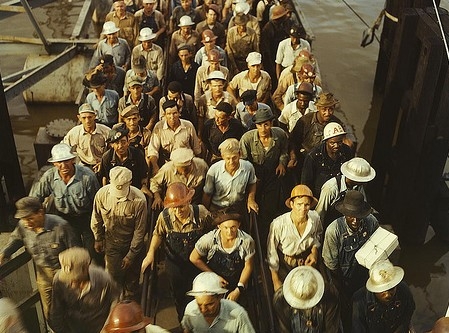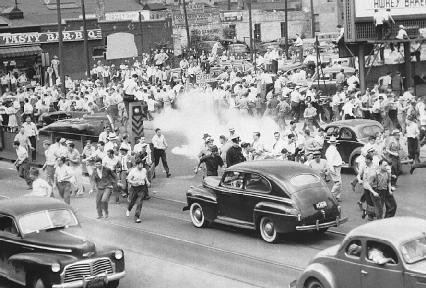Another act of white aggression against Blacks conveniently called race riots happened on June 15 and 16, 1943.
Called the Beaumont Riot of 1943, it was sparked by racial tensions which arose in this Texas shipbuilding center during World War II. The pouring of African-American workers in industrial jobs in the Beaumont shipyard meant white workers now had increased competition in the search of jobs and having the job secured.
It was a situation the whites had become scornful of and so when rumours spread that a Black male had raped a white woman, disgruntled folks felt the time was right to teach the “Ni—-s a lesson.”
“On the evening of June 15 more than 2,000 workers, plus perhaps another 1,000 interested bystanders, marched toward City Hall. Ultimately the leaderless and disorganized crowd may have reached 4,000. Even though the woman could not identify the suspect among the blacks held in the city jail, the workers dispersed into small bands and began breaking into stores in the black section of downtown Beaumont. With guns, axes, and hammers, they proceeded to terrorize black neighborhoods in central and north Beaumont. Many blacks were assaulted, several restaurants and stores were pillaged, a number of buildings were burned, and more than 100 homes were ransacked.”

The riot itself had exploded on June 15, 1943 with most of the violence ending a day later. It didn’t matter that the local white woman who had accused a black man of raping her was unable to identify her attacker from the number of black inmates held at the city jail. The white shipyard workers had made their way from the Pennsylvania Shipyard to the local jail, where they demanded the release of the supposed accused. The accuser couldn’t make a positive identification.
Mayor George Gary called in the Texas National Guard late on the night of June 15, and acting governor A.M. Aiken Jr. declared Beaumont to be under martial law. About 1,800 guardsmen entered Beaumont along with 100 state police and 75 Texas Rangers at that time. Upon their arrival at 8:30 p.m. curfew was established. The declaration of martial law was lifted on June 20.
During the five-day period two people were killed with another dying weeks later. Also 206 people were arrested and tried in court on June 20. Of those arrested, only 29 were actually charged with specific crimes, mostly assault and battery, unlawful assembly, and arson. The rest of those arrested were released. No one was specifically held responsible for the deaths during the riot. Although black and white workers returned to the Pennsylvania Shipyard, production in the area was slowed for months.

“Rapid population growth brought about forced integration because service facilities were not abundant enough to permit complete segregation. Housing shortages were severe, and the races were forced to live in close proximity. In the factories, blacks began to have access to semiskilled and skilled jobs, a situation that put them in competition with white workers.”
There were also food shortages. Food allotments and ration cards had been issued in 1941 in Beaumont.
A regional Ku Klux Klan rally that crossed paths with the annual Juneteenth celebration along with the struggle for food and housing set the stage for what the head of the regional food administration would lead to trouble.

Jaytee Mattox was recorded in an audio interview saying, “They came by in their trucks throwing brick hollering, “Ni—rs, get inside.”
The attack against black people and businesses was profound. Small children would not come out from under beds for days because they were still frightened.
The adults didn’t fare better. After the martial law was lifted, thousands of black residents were said to have packed up and left town for good.
When it ended, 200 businesses were destroyed, 300 people were arrested with 200 others injured.











